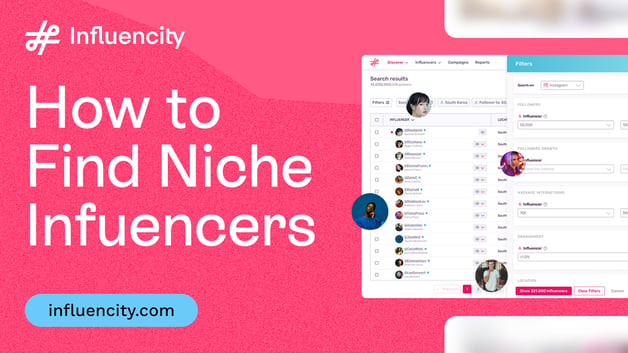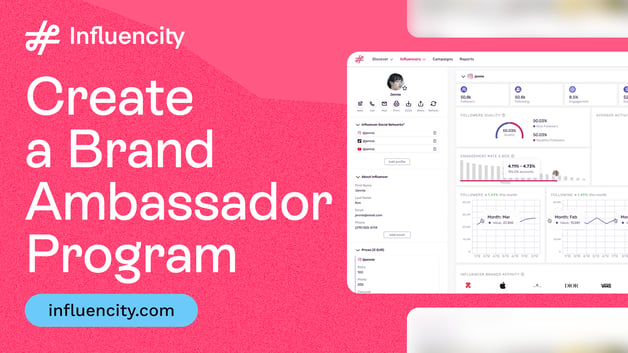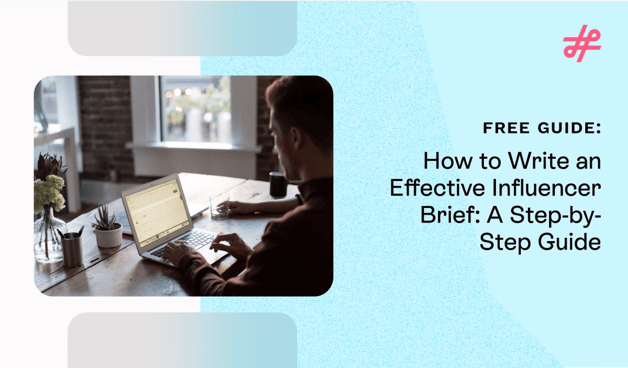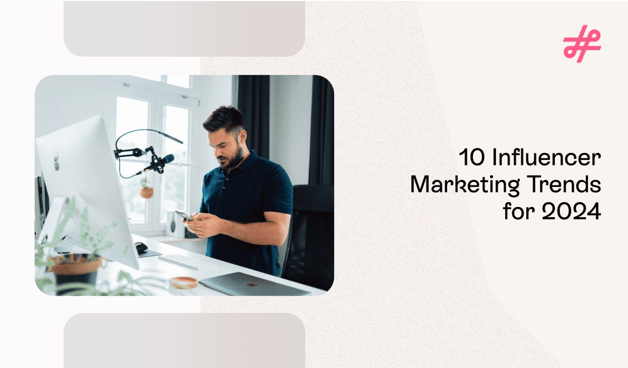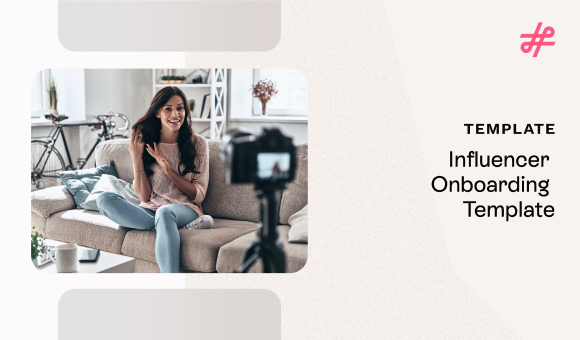Editorial
Industry Voices Editorial: Getting Inside the Creator Mindset – A Conversation with Colin Rocker
Editorial
At Influencity, we believe that powerful influencer marketing doesn’t start with tools or data, it starts with people. That’s why we’re launching Industry Voices, an editorial series spotlighting the real experiences, strategies, and challenges of the professionals shaping the creator economy today.
Our goal? To provide brands, agencies, and marketers with authentic, firsthand insights from the very people they aim to work with. Because to build better campaigns, you need to understand the creator perspective — not just their metrics.
We kick things off with Colin Rocker, a full-time content creator whose rise has been anything but ordinary. From corporate consultant to career advice influencer with over 90K followers, Colin’s story is a masterclass in turning audience trust into a sustainable business. But behind the viral videos and polished collabs is someone navigating financial risks, mental health challenges, and the daily pressure of self-employment.
In this interview, Colin opens up about:
- What truly influences a creator’s decision to work with a brand
- How creators think about long-term monetization
- Why follower count is only part of the equation
- And what brands still get wrong when reaching out to creators
This article is meant to be more than just a peek behind the curtain in a creator’s typical day to day, it’s meant to be kind of a reality check and roadmap for marketers, brands and agencies who want to do better when it comes to collaborating with creators.
Who is Colin Rocker and Why Did We Talk to Him?
If you’ve seen Colin’s content, you’ll know he’s the real deal. His content isn’t curated for perfection—it’s honest, practical, and emotionally resonant. From offering job advice on TikTok to opening up about becoming a new dad, Colin connects with his audience by being unapologetically human.
So what makes Colin a voice worth listening to? He’s built an audience across TikTok, LinkedIn, and Instagram that doesn’t just consume his content—they trust it. And when it comes to influencer marketing, that’s gold.
His communication style is real, unscripted, and incredibly relatable. He doesn’t just share career advice—he connects with his audience in a way that feels personal. And that’s exactly what makes a great creator.
In this conversation, Colin shares his journey, his insights on brand collaborations, monetization strategies, the challenges of being a creator, and the future of influencer marketing.
From Consultant to Creator: How It All Started
After working in consulting and startups, Colin pivoted to content creation full-time in 2024. But he didn’t do it on a whim—he had a financial runway, goals, and a supportive partner who helped turn that leap of faith into a career.
Colin: “I started sharing career advice in 2021 on TikTok to help others figure things out the way I had to. Over time, that turned into a brand.”
Colin Rocker describes himself as a first-generation professional — the son of a plumber and a schoolteacher — who had to navigate the professional world entirely on his own. Starting his career in consulting and later transitioning into startups, he didn’t just have to learn the technical aspects of his roles, but also how to advocate for himself, build relationships, and understand the unwritten rules of the corporate world.
@careercolin Replying to @yourgenzdreamer #officepolitics #office #corporate #corporatesurvival #survival #survivalguide
♬ original sound - Colin Rocker
As he moved up in his career and transitioned between companies, colleagues began asking how he had managed to grow so quickly. That curiosity inspired Colin to start sharing career advice on TikTok in 2021, hoping to guide others who, like him, were figuring things out from scratch.
His content resonated. Over time, he expanded his presence to Instagram, YouTube, and LinkedIn, steadily growing a community and building a personal brand rooted in transparency, humor, and actionable insights.
@careercolin Do you like to put off or shy away from having diffucult conversations? If so, that may be holding you back in your career! #career #careeradvice
♬ original sound - Colin Rocker
Then, in early 2024, a turning point arrived: Colin found himself out of a job, faced with a choice. With increasing momentum from digital partnerships, consulting gigs, and product sales, he made a bold decision — to pursue content creation full-time.
Since May 2024, Colin has been a full-time creator. And by all accounts, it’s been a transformative chapter — one where his background, experience, and voice have found a powerful platform and purpose.
Taking the Leap to Full-Time Content Creation
For creators starting out, Colin recommends building real value and focusing on audience alignment over raw numbers.
Colin: “It was scary, but I had a calculated risk strategy…It’s still a risk, but having savings, goals, and a plan eased the pressure”.
Colin’s decision to leave behind a stable salary and traditional career path wasn’t made lightly — it was a bold move, but a calculated one. While the shift to full-time content creation came with uncertainty, he approached it with a clear strategy designed to minimize risk and maximize his chances of success.
First, he built a solid financial runway, relying on savings from his previous roles and the growing income generated through content creation. This cushion gave him the freedom to take the leap without the immediate pressure to monetize every post.
Second, he and his wife set concrete financial goalposts. They agreed on benchmarks to measure success, deciding that if he wasn’t meeting certain financial targets within six months, they would reevaluate the decision together. This helped frame the leap as a testable, time-bound strategy rather than an all-or-nothing gamble.
Finally, Colin leaned on his support system, including a talent agency that helps him navigate brand partnerships and optimize revenue streams. With this team in place, he was able to focus on creating while still growing the business side of his brand.
While the move into full-time content creation came with its share of risk, Colin’s thoughtful planning, clear metrics, and reliable support network turned a leap of faith into a sustainable career shift.
The Creator Equation: It’s Not Just About Follower Count
When it comes to working with agencies, Colin Rocker believes that follower count can matter, but it’s far from the whole story. He sees follower count as a reflection of a creator’s ability to generate engaging content, not a guarantee of success or brand deals.
Colin: “Brands didn’t start reaching out until I hit 10K followers. But it’s not the number that matters—it’s how well your audience aligns with a brand’s goals.”
In his own experience, the shift didn’t really happen until he crossed the 10,000-follower mark. That was the tipping point when agencies and brands began to reach out with interest. However, he’s quick to point out that growth beyond that point — from 10K to 95K — wasn’t about numbers alone. What truly influenced brand partnerships was how well his audience aligned with a brand’s goals and target demographic.
@careercolin I would not want to be a recent grad looking for a job right now. If you’re a young job seeker / recent grad, here’s what I’d do to navigate this wild job market. #jobmarket #jobsearch #careeradvice
♬ original sound - Colin Rocker
For creators who haven’t yet reached that threshold, Colin emphasizes that it’s still possible to pitch yourself directly to brands. While agencies often begin to pay attention once a creator hits five figures in followers, building a clearly defined and engaged audience can matter just as much, if not more, than sheer size.
In short, follower count might open the door, but alignment, engagement, and content quality are what keep it open.
Niche vs. Personal Brand: Do You Really Need One?
Colin balances his career content with glimpses into his personal life—marriage, fitness, parenthood—which keeps his content relatable while giving brands a clear entry point.
Colin: “Some say ‘I am my niche.’ That’s great for followers, but brands need to know where they fit.”
When it comes to personal branding versus niching down, Colin Rocker has developed a thoughtful and strategic approach. While many creators claim “I don’t have a niche; I am my niche,” Colin points out that this mindset can make it difficult for brands to understand how to collaborate effectively. Without a clear focus, monetization becomes a challenge.
Instead, Colin has crafted a personal brand that blends multiple dimensions of his life—career advice, marriage, new parenthood, fitness, and travel. This multifaceted content strategy allows him to stay true to who he is while still offering enough structure for brands to see where they fit into the narrative.
This intentional blend makes his content feel authentic and relatable, while also making it easy for sponsors to integrate organically into his content series. Rather than interrupting his feed with jarring, out-of-place ads, his sponsored content is seamlessly woven into the stories he’s already telling, ensuring that brand partnerships feel natural, not forced.
For Colin, it’s not about choosing between being a brand or a creator, it’s about building a brand around you that’s clear, engaging, and aligned with the type of partnerships you want to attract.
The Dark Side of Going Viral: Challenges & Mental Health in Content Creation
Colin’s content creation journey hasn’t come without its challenges, especially when it comes to the emotional and psychological toll of building a public presence.
Colin: “When content leaves your bubble, it invites criticism. Mental health is a real challenge.”
He also talks about the pressure of being self-employed and staying connected in a solo career. Online communities and events are his way to combat isolation. To counter this, Colin actively engages in Slack communities, group chats, and industry events to maintain his sense of connection and support.
One of the most significant hurdles he highlights is mental health. As his content reaches broader audiences, especially when a video goes viral, it often escapes his core community and enters the feeds of people unfamiliar with or indifferent to his story. With that comes an increase in negative comments and criticism. To cope, Colin has had to develop mental frameworks that help him process and manage the emotional weight of public scrutiny.
Beyond mental health, self-employment brings its own pressures. Colin faces the constant responsibility of finding new brand deals, maintaining a consistent energy level, and ensuring that every piece of content he puts out provides real value. With no fixed salary or external structure, the hustle is entirely self-driven.
These insights serve as a powerful reminder that being a creator isn’t all aesthetics and brand deals, it requires emotional resilience, business savvy, and a strong support system to thrive.
Monetization Strategies for Creators
When it comes to monetizing content, Colin Rocker follows what he calls the “Three C’s Framework”, a simple but effective approach that has helped him build a sustainable career as a full-time creator.
- Competence: Offer real value.
- Charisma: Be yourself.
- Conflict: Share your journey.
The first “C” is for competence. Sharing knowledge that’s genuinely useful. For Colin, this means providing career advice based on real-life experience and insights that resonate with his audience.
Next is charisma, meaning showing up in a way that feels genuine and confident. Colin’s unscripted, down-to-earth communication style plays a big role in how he connects with people online.
And finally, there’s conflict. Being open about challenges and setbacks. Whether it’s losing a job, navigating burnout, or taking risks as a creator, Colin believes in sharing the messy parts of the journey too, because that’s what makes content relatable.
In terms of income streams, Colin monetizes through three key pillars:
- Brand Partnerships: His first major collaboration was with Notion when he hit 10K followers, and since then, brand deals have become a significant part of his business.
- Digital Products: From career templates to online courses and guides, he creates resources that offer real value and scale well.
- Speaking & Consulting: These opportunities allow him to connect with his audience on a more personal level while expanding his professional brand.
Together, these strategies provide Colin with a balanced and diverse income, making content creation not just viable, but fulfilling and scalable.
What Brands Still Get Wrong: Negotiating with Brands & Red Flags
When it comes to brand partnerships, Colin has developed a clear sense of what works and what doesn’t. Drawing from his own experiences, he outlines a few key best practices that make collaborations successful for both creators and brands.
Red flags? Free promotion requests, impersonal outreach, and overly scripted briefs.
For starters, he emphasizes the value of long-term partnerships. Rather than one-off posts, Colin believes that sustained collaborations lead to more meaningful content and deeper brand integration.
Colin: “Long-term partnerships > one-off posts. And if I can’t make the content mine, I won’t take the deal.”
He also stresses the importance of creative freedom.When creators are allowed to tell a brand’s story in their own voice, the result feels more organic and audiences can tell the difference.
Lastly, he encourages brands to focus on emotional benefits, not just product features. Content that taps into real feelings and experiences tends to resonate more and drive authentic engagement.
But just as important as what to do, is what not to do. Colin flags a few common red flags that immediately turn him off from potential deals. At the top of the list: expecting free promotion. Creators invest serious time and resources into their work, exposure alone isn’t enough. Another red flag is mass outreach with no personalization.
A generic pitch suggests the brand hasn’t done their homework. And finally, over-scripted content is a dealbreaker. If he can’t make the content feel like his own, it’s a pass. For Colin, successful brand relationships are built on respect, creative collaboration, and a shared understanding of what makes content truly impactful.
Future Goals & Predictions: The Future Is Long-Form
Looking ahead, Colin Rocker’s plans are as ambitious as they are inspiring. One of his most exciting recent milestones? He’s officially signed his first book deal, a testament to the growing reach and credibility of his platform.
As he continues to build his personal brand, Colin is also eager to collaborate more closely with LinkedIn, a platform where he’s already established a strong presence, and to explore partnerships with other creators across different niches.
But Colin’s vision isn’t just focused on his own career, he’s also got his finger on the pulse of where the creator economy is heading. His prediction for 2025? A return to long-form content. After years of short-form dominance, he believes audiences are craving deeper, more meaningful connections with the people they follow.
Colin: “People want connection. I predict long-form is coming back strong—podcasts, newsletters, YouTube.”
Whether through podcasts, YouTube videos, or thoughtful written pieces, Colin sees a shift toward content that allows for storytelling, vulnerability, and depth. It’s a change he’s excited about, both as a creator and a consumer—and one he plans to lean into as he continues to grow his brand.
With a growing platform, a bold content strategy, and a genuine voice that connects across channels, Colin’s future looks not only promising, but like one to watch closely.
Tags:
Creators
Cam Khaski Graglia
Cam Khaski Graglia is the Content Manager at Influencity, where she blends creativity, strategy, and storytelling to craft impactful content. A passionate researcher and lifelong book lover, she thrives on exploring new narratives and shaping engaging brand messaging. Beyond content strategies, briefs, and articles,...




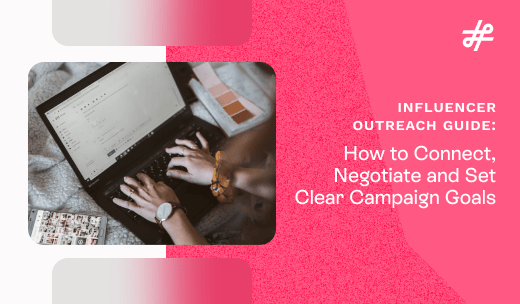
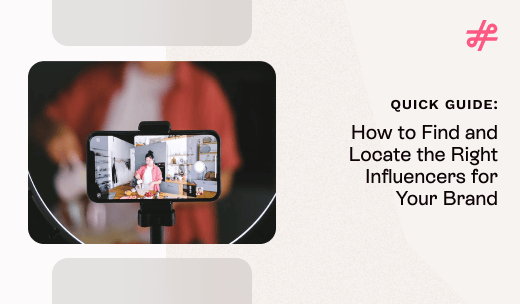



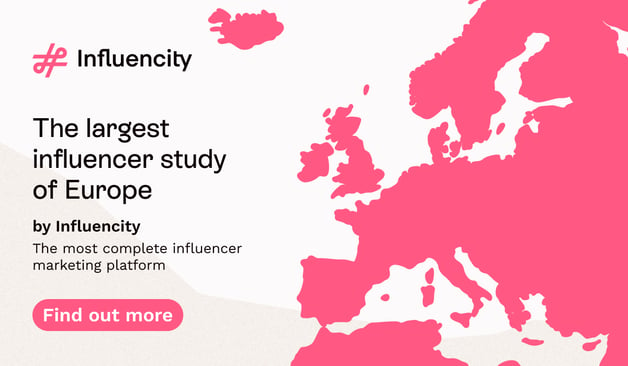

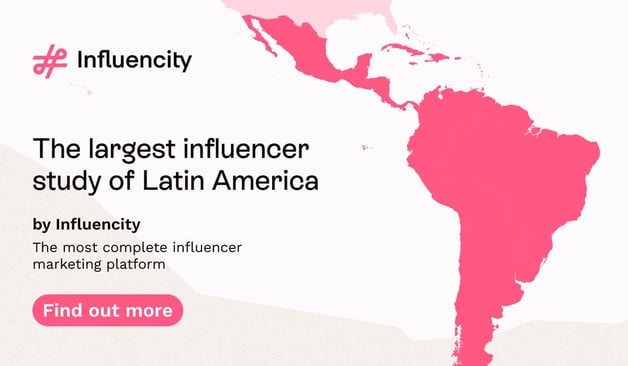


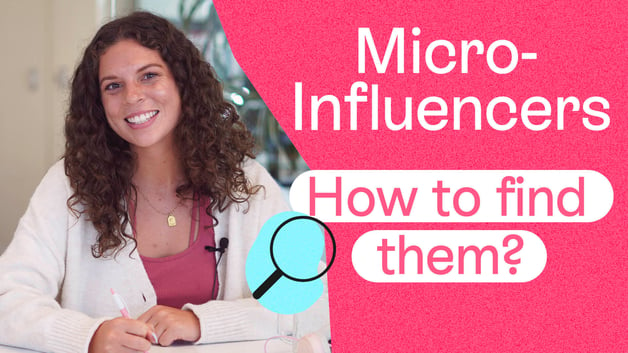


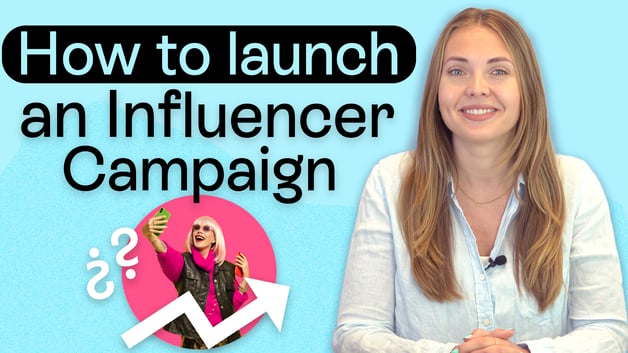



%20and%20How%20Can%20They%20Benefit%20Your%20Brand%20article.jpg?length=628&name=What%20Are%20Key%20Opinion%20Leaders%20(KOL)%20and%20How%20Can%20They%20Benefit%20Your%20Brand%20article.jpg)
